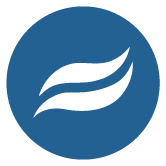

|
| Major: 3001
Catalog Year: 2023-2024
Effective Term: 2004 Fall
Last Admit Term: 2020 Fall
Award: AAS Total Credits: 64 CIP Code: 15.0506 |
Primary College:
Initiating College: Rio Salado College
Program Availability: Not Found
Program Availability: College-Specific (Mor)
Field of Interest:
Instructional Council: Occupational Deans GPA: 2.0 |
|
SOC Code:
| |
|
Program Prerequisites: None
|
|||||||||||
| Required Courses | |||||||||||
|---|---|---|---|---|---|---|---|---|---|---|---|
WWM110 Principles of Water Treatment Plant Operations 3 | Credits: 30 | ||||||||||
| Restricted Electives | |||
|---|---|---|---|
WWM+++++ Water/Wastewater | Credits: 9 | ||
| General Electives | |||
|---|---|---|---|
|
| Credits: | ||
| General Education Requirements | |||
|---|---|---|---|
| General Education Requirement | Credits: 25 | ||
| General Education Core | Credits: 15 | ||
| First-Year Composition | Credits: 6 | ||
| +ENG101 First-Year Composition (3) AND
+ENG111 Technical Writing (3) | |||
| Oral Communication | Credits: 3 | ||
| COM100 Introduction to Human Communication | |||
| Critical Reading | Credits: 3 | ||
| + CRE101 Critical and Evaluative Reading I (3) OR
+ CRE111 Critical Reading for Business and Industry (3) OR Equivalent as indicated by assessment | |||
| Mathematics | Credits: 3 | ||
| +MAT122 Intermediate Algebra | |||
| General Education Distribution | Credits: 10 | ||
| Humanities, Arts and Design | Credits: 3 | ||
| Any approved general studies course in the Humanities and Fine Arts Area. | |||
| Social-Behavioral Sciences | Credits: 3 | ||
| Any approved general studies course in the Social and Behavioral Sciences Area. | |||
| Natural Sciences | Credits: 4 | ||
| Any approved general studies course in the Natural Sciences Area. | |||
| Program Competencies | |||
|---|---|---|---|
| 1. Identify and describe the common disease and microbial processes associated with water supply and sewage and identify methods employed by the water and wastewater treatment industry to survey and control disease transmission and microbial activity. (WWM110)
2. Solve simple and exponential equations used in the water/wastewater treatment industry. (WWM110) 3. Describe the stages of the natural and societal water cycles and the public controls components of the societal water cycle. (WWM110) 4. Describe and list examples of chemical, physical, biological principles and processes as applied to water and wastewater treatment. (WWM110, WWM112, WWM114, WWM120, WWM122) 5. Describe the composition, characteristics and properties of water and wastewater. (WWM110,WWM112) 6. List the criteria by which water quality is judged for potable, industrial and agricultural use. (WWM110, WWM112) 7. Describe the areas of safety to be considered in water distribution, water treatment, wastewater collection, and wastewater treatment. (WWM110, WWM120, WWM134) 8. Describe the types, functions, layout of and equipment used in water and wastewater treatment facilities. (WWM110, WWM112, WWM114, WWM116, WWM120, WWM122, WWM124) 9. Prepare, analyze, interpret and report results of water and wastewater sample testing. (WWM110, WWM112, WWM114, WWM120, WWM122) 10. Describe the regulations and standards for water and wastewater. (WWM110, WWM116, WWM132, WWM240) 11. Explain procedures for startup, operation, maintenance and shutdown of various water and wastewater treatment processes and equipment. (WWM112, WWM114, WWM122, WWM124) 12. List and describe factors considered in determining water distribution needs, wastewater collection needs and systems design. (WWM130, WWM132, WWM134) 13. Identify the components, explain the purposes and identify necessary maintenance tasks of wastewater lift stations. (WWM132) 14. Describe the areas of safety to be considered in water collection and distribution. (WWM130, WWM132, WWM134) 15. Describe the types, functions, layout of and equipment used in water distribution and collection. (WWM130, WWM132, WWM134) 16. Describe the functions, materials, components, hydraulics, installation, maintenance, inspection and control procedures used in water distribution. (WWM130, WWM132, WWM134) 17. Describe the procedures for designing, developing, testing and equipping new wells. (WWM134) | |||
|
+ indicates course has prerequisites and/or corequisites.
++ indicates that any suffixed course may be selected. MCCCD Governing Board Approval Date: 12/10/2002 | |||